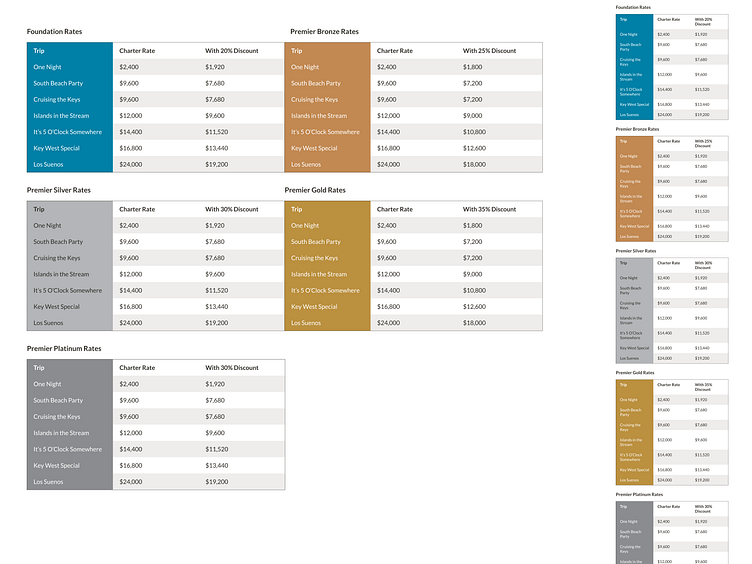Table example
This is part of a design system I'm working on. See the reference site.
——————————
Some guidelines:
Keep it simple and concise: Tables should present information in a clear and organized manner. Avoid unnecessary complexity and keep the design as simple and concise as possible.
Prioritize important information: Identify the most crucial data points or columns and position them prominently within the table. Users should be able to quickly scan and locate the most relevant information.
Use appropriate column headers: Clearly label each column with a descriptive header. Column headers should accurately represent the content within the column and be concise to aid comprehension.
Ensure consistency and alignment: Maintain consistent formatting and alignment throughout the table. This includes consistent font sizes, row heights, and column widths. Alignment should be logical and make it easy for users to compare values across rows and columns.
Provide visual cues and affordances: Use visual cues, such as shading, borders, or alternating row colors to improve readability and distinguish between rows and columns. Affordances, like sorting indicators or filters, can help users interact with and manipulate the data.
Consider responsive design: Tables should be designed with responsiveness in mind, meaning they should adapt to different screen sizes and orientations. Consider how the table will appear on mobile devices and ensure it remains readable and usable.
Enable sorting and filtering: If applicable, provide sorting and filtering options to allow users to customize the view of the data. This can enhance the usability of the table and make it easier to find specific information.
Show feedback for actions: When users interact with the table, such as sorting or filtering, provide visual feedback to indicate the action has been successfully executed. This feedback can be in the form of animations, highlighting, or notifications.
Consider scalability: Tables may contain a large amount of data, so it's crucial to design them to handle scalability. Consider pagination, infinite scrolling, or other techniques to manage large datasets without overwhelming the user.
